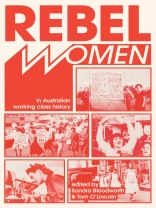Here are stories that challenge the conventional views of working class women and their struggles. Strikes and demonstrations throughout the 20th century shatter traditional images of women as passive victims. From the women of Broken Hill, who fought strike-breakers with axes and broom handles in the early part of the century through the 1930s Depression and World War II through to the postwar period, women played an important role in strikes and unemployed movements.
Rebel Women also challenges those accounts which see the enemy as ‘patriarchy’ rather than capitalism, or which deny the relevance of the class altogether. These women fought their oppression alongside working men, as participants in — and leaders of — the class struggle. Frequently they had to confront opposition from middle class or upper class women. Many were sustained by a socialist vision.
First published in 1999, this new enhanced edition makes these inspiring stories available to new generations.
Содержание
1 Militant Spirits: The rebel women of Broken Hill — Sandra Bloodworth
2 Brazen hussie’s and God’s police: Fighting back in the Depression years — Janey Stone
3 Class struggle on the home front: Women, unions and militancy in the Second World War — Janey Stone
4 Against the stream: Women and the left, 1945-1968 — Tom O’Lincoln
5 Militant action among white-collar workers: The struggle for equal pay in the insurance industry 1973-75 — Diane Fieldes
6 Sweatshop Rebels: The 1981 Kortex strike — Sandra Bloodworth
7 Dedication doesn’t pay the rent! The 1986 Victorian nurses’ strike — Liz Ross
Об авторе
Tom O’Lincoln was joined the radical student movement in Germany in 1967 and was subsequently a socialist organiser, unionist, journalist and writer. One major interest has been the Communist Party of Australia and he is the author of Into the Mainstream: The Decline of Australian Communism. His political memoirs The Highway is for Gamblers cover his life as a political activist for 50 years in the US, Germany, Australia and Indonesia. Currently living in residential care, Tom continues his commitment to revolutionary Marxism.












